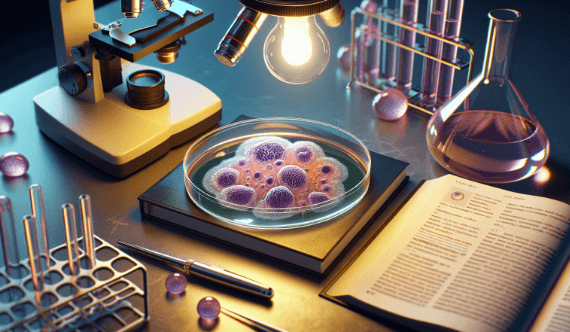HeLa Cells and Drug Testing Innovations

Introduction to HeLa Cells
HeLa cells are a remarkable cell line that has revolutionised medical research and drug testing. These cells, derived from a cervical cancer sample taken from Henrietta Lacks in 1951, have the unique ability to survive and proliferate indefinitely in laboratory conditions. This immortality has made HeLa cells an invaluable tool for scientists worldwide, enabling groundbreaking discoveries and advancements in various fields, including cancer research, virology, and drug development.
The Origin of HeLa Cells
The story of HeLa cells begins with Henrietta Lacks, an African-American woman who sought treatment for cervical cancer at Johns Hopkins Hospital in Baltimore, Maryland. During her treatment, a sample of her cancerous tissue was taken without her knowledge or consent, a common practice at the time. This tissue sample was given to Dr. George Gey, a researcher at the hospital, who discovered that the cells from Lacks’ tumour had an extraordinary capacity to survive and replicate in laboratory conditions.
The Significance of HeLa Cells in Medical Research
The immortality of HeLa cells has made them a cornerstone of medical research. Scientists have used these cells to study a wide range of biological processes, including cell division, gene expression, and the effects of various substances on human cells. HeLa cells have been instrumental in the development of vaccines, including the polio vaccine, and have contributed to our understanding of cancer, AIDS, and other diseases.
HeLa Cells and Cancer Research
One of the most significant applications of HeLa cells has been in cancer research. Scientists have used these cells to study the molecular mechanisms underlying cancer development and progression, as well as to test the effectiveness of various cancer treatments. HeLa cells have been particularly useful in understanding the role of oncogenes, genes that have the potential to cause cancer when mutated or overexpressed.
HeLa Cells and Virology
HeLa cells have also played a crucial role in the field of virology. These cells have been used to study the replication and pathogenesis of various viruses, including HIV, influenza, and human papillomavirus (HPV). In fact, HeLa cells were used to develop the first HPV vaccine, which has since helped prevent countless cases of cervical cancer worldwide.
HeLa Cells and Drug Testing
Perhaps one of the most significant applications of HeLa cells has been in the field of drug testing. These cells have been used to screen countless compounds for their potential therapeutic effects, as well as to study the mechanisms of drug action and toxicity. The use of HeLa cells in drug testing has accelerated the development of new medications and has helped ensure the safety and efficacy of drugs before they are tested in human clinical trials.
The Advantages of Using HeLa Cells in Drug Testing
There are several advantages to using HeLa cells in drug testing. First, these cells are readily available and easy to maintain in laboratory conditions, making them a cost-effective and efficient tool for researchers. Second, HeLa cells are genetically stable, meaning that they maintain their characteristics over time and across multiple generations, ensuring consistent and reliable results. Finally, the use of HeLa cells in drug testing reduces the need for animal testing, which is not only ethically controversial but also often fails to accurately predict human responses to drugs.
High-Throughput Screening with HeLa Cells
One of the most significant innovations in drug testing using HeLa cells has been the development of high-throughput screening (HTS) techniques. HTS allows researchers to rapidly test large numbers of compounds for their potential therapeutic effects, streamlining the drug discovery process. In HTS, HeLa cells are cultured in multi-well plates, and automated systems are used to apply various compounds to the cells and measure their responses. This approach has greatly accelerated the identification of promising drug candidates and has led to the development of numerous new medications.
Microfluidic Devices and HeLa Cells
Another exciting innovation in drug testing using HeLa cells has been the development of microfluidic devices. These tiny, chip-like devices contain microscopic channels and chambers that can be used to culture and manipulate cells, including HeLa cells. Microfluidic devices allow researchers to study the effects of drugs on cells in a more physiologically relevant environment, as they can mimic the complex interactions and gradients found in the human body. This technology has the potential to revolutionise drug testing by providing more accurate and predictive results than traditional cell culture methods.
Organ-on-a-Chip Technology and HeLa Cells
Organ-on-a-chip technology is another promising application of HeLa cells in drug testing. This technology involves the creation of miniaturised, three-dimensional models of human organs on microfluidic chips. These models can be used to study the effects of drugs on specific organs and to predict potential side effects and toxicities. HeLa cells have been used to create various organ-on-a-chip models, including models of the liver, kidney, and lungs. This technology has the potential to greatly reduce the need for animal testing and to provide more accurate predictions of human responses to drugs.
The Future of Drug Testing with HeLa Cells
As technology continues to advance, the use of HeLa cells in drug testing is likely to become even more sophisticated and efficient. Researchers are currently exploring the use of gene editing technologies, such as CRISPR-Cas9, to modify HeLa cells and create more specialised cell lines for drug testing. Additionally, the integration of artificial intelligence and machine learning algorithms with HTS and microfluidic devices is expected to further accelerate the drug discovery process and improve the accuracy of predictions.
The Ethical Implications of HeLa Cells
While the use of HeLa cells in medical research and drug testing has undoubtedly led to numerous breakthroughs and advancements, it is important to acknowledge the ethical implications surrounding these cells. Henrietta Lacks, the woman from whom HeLa cells were derived, was never informed about the use of her cells in research and did not give her consent. This has raised questions about informed consent, patient privacy, and the ownership of biological materials. In recent years, there has been a growing recognition of the need to address these ethical issues and to ensure that the use of human biological materials in research is conducted in a fair and transparent manner.
The Legacy of Henrietta Lacks
The story of Henrietta Lacks and HeLa cells has gained widespread attention in recent years, thanks in part to the publication of Rebecca Skloot’s best-selling book, “The Immortal Life of Henrietta Lacks.” This book, which was later adapted into an HBO film, brought the story of Lacks and her cells to a broader audience and sparked important conversations about ethics, race, and science. In 2013, the Lacks family reached an agreement with the National Institutes of Health (NIH) regarding the use of HeLa cells in research, which includes provisions for acknowledgment of the Lacks family’s contributions and the establishment of a committee to review applications for access to HeLa genome data.
The Importance of Recognizing the Contributions of HeLa Cells
As we continue to benefit from the use of HeLa cells in medical research and drug testing, it is crucial that we recognize and honour the contributions of Henrietta Lacks and her family. This includes not only acknowledging the ethical issues surrounding the use of these cells but also ensuring that the Lacks family is involved in decisions regarding the use of HeLa cells and that they share in the benefits of the research conducted using these cells. By doing so, we can work towards a more just and equitable future for medical research and drug testing.
Conclusion
HeLa cells have revolutionised medical research and drug testing, enabling countless breakthroughs and advancements in our understanding of human biology and disease. As we continue to develop new technologies and approaches for using these cells in research, it is important that we remain mindful of the ethical implications and work towards a future in which the contributions of all those involved in the creation and use of HeLa cells are recognized and honoured. By doing so, we can ensure that the legacy of Henrietta Lacks continues to inspire and inform medical research for generations to come.




